Section 1 Subsystems
Memory -
Memory performance is very important on a motherboard, especially when you have a CPU with multiple cores and threads. If you have slow memory your cores and threads can become starved for data to execute. To test memory performance we run both Sisoft’s SANDRA and AIDA64. These two combine to not only give us accurate numbers but to validate each other. For testing at stock speeds the memory is hard set to 1333MHz while overclocking testing is done at the highest stable speed for the voltage of 1.65v this is due to the different memory dividers for each CPU. As such, the memory speeds will vary greatly. This means that the overclocked numbers are a little misleading and while they can show a trend are really only included to show if a board has a problem with memory performance at high clockspeeds.
The G1.Asssassin2 is even faster than the X79SI we used for our initial review of the Sandy Bridge E this has to be due to the removal of the other four RAM slots. Ok, so the performance difference is not much on paper, but we imagine that we will see this come back in many of our memory intensive tests like HyperPi, Cinebench and possibly even LightWave 3D. For the consumer this will help out with multi-tasking as well as gaming and other workloads that use up your system memory. 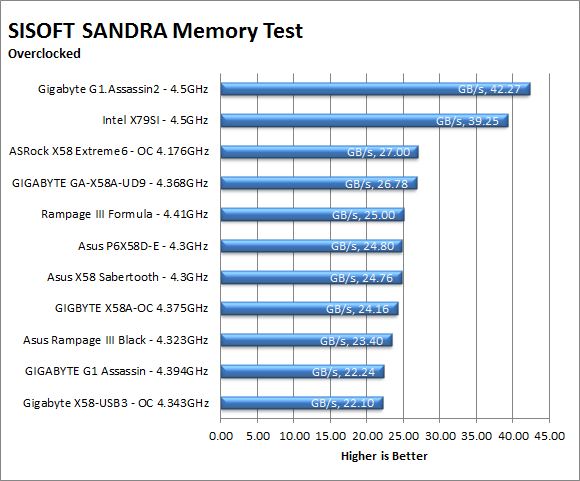
| AIDA64 Stock Memory Performance | AIDA64 Overclocked Memory Performance |
 |
 |
Drive performance -
Drive performance is also one of the major subsystems that goes to make up the performance of a motherboard. For our testing we use Sandra and AIDA64 again. We only test with single drives for each type of controller present on the motherboard (unless it is a professional product where we will use RIAD 5 and/or 10). We have also begun using a Seagate PS-110 USB 3 external HDD for our USB 3.0 performance. As a side note, we include the overclocked numbers here to make sure (again) that you are not going to see a major drop in performance due to minor instabilities at high clock speeds.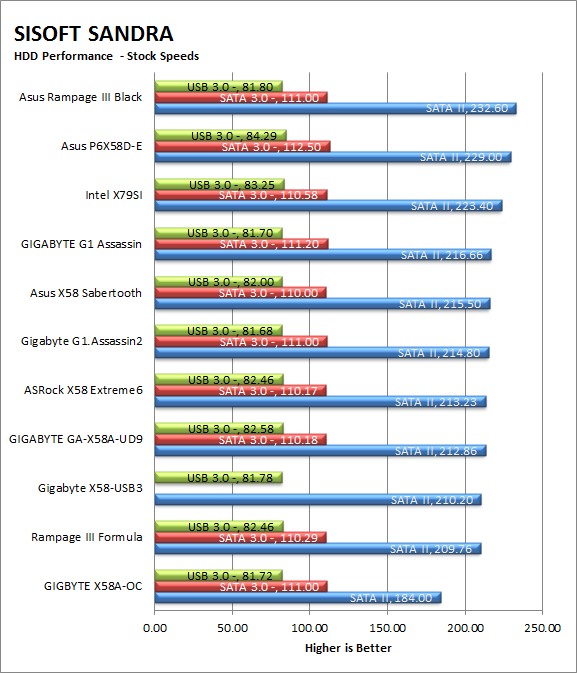
Drive performance is not a strong suit of the G1.Assassin2. It is about average for the boards we have tested and a little slower than the X79SI. The drive speed difference is larger than the memory performance gap which could allow the X79SI to keep ahead of the G1.Assassin2.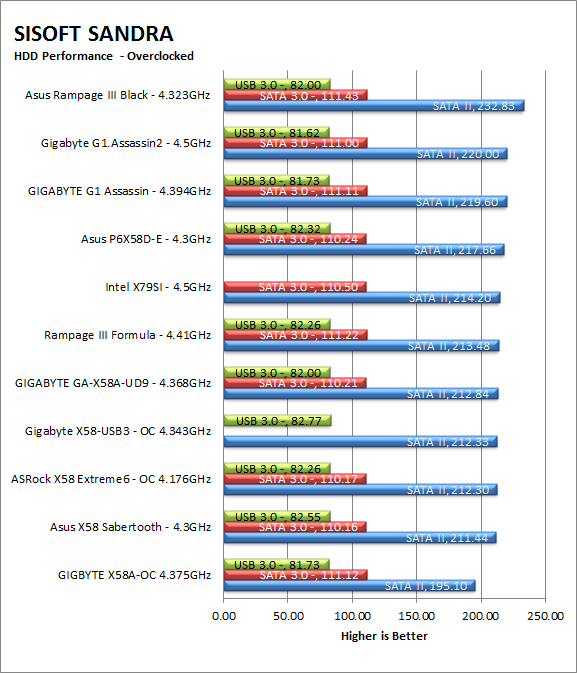
| AIDA64 Stock HDD Performance | AIDA64 Overclocked HDD Performance |
 |
 |
| AIDA64 Stock USB 3.0 Performance | AIDA64 Overclocked USB 3.0 Performance |
 |
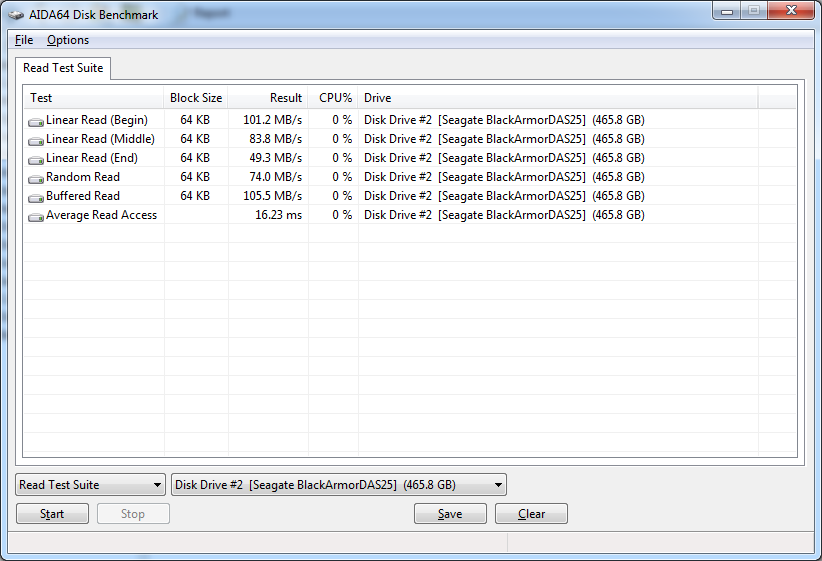 |
Power -
Power efficiency is another of those misnomers that we get caught up in. We hear about idle states and power gates. But what does that mean to you and I? On the surface having power management that reduces idle power sounds great and can be a benefit to someone that leaves their system on for long periods of time (and inactive) but how a system handles power under load and the delta between the two states is often more important than the idle power usage numbers. We use only P3 Kill A Watt instruments for measuring power. 
The G1.Assassin2, like its older brother, can pull some power from the wall. It is not the hungriest board we have tested and is more power efficient that the original G1.Assassin, but we hoped for more. The draw that you are seeing is due to both the KillerNIC and the Full X-fi audio card that are on the board. 
Cooling (Board Level)
Board level cooling is an important factor in product performance and longevity. Components like the chipset, VRM modules and even capacitors need to be kept relatively cool to prevent failure. As these parts are made of silicon, they have a thermal breakdown threshold; or melting point. At that temperature the actual transistors built into chip will begin to deform and break down. Granted, the threshold is often very high, but you still need to make sure that components stay away from this level of heat for longer product life. 
When we first looked at the G1.Assassin2 we worried about the cooling on the X79 chipset, after all the heatsink there is not much more than a big block of metal. However, we soon found out that the cooler is pretty efficient. The G1.Assassin2 is the coolest running board out of the ones we tested. At least it was at stock speeds. When we overclocked the board it was a different story, but then again it always is when you overclock.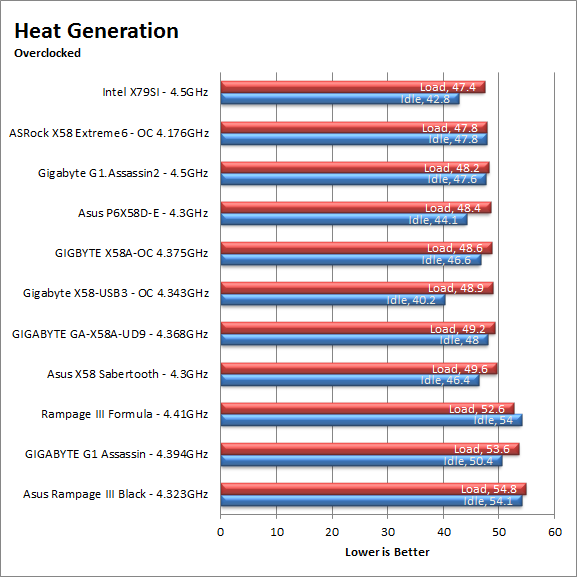
Audio -
Audio is highly subjective. What we find pleasing may sound “off” to you. That is always going to the problem with testing audio; results will vary too widely depending on the tastes of the listener. However, there are ways of measuring the audio output with an objective ear. There is also the issue of audio causing performance issues in gaming and video playback. The reason this is a potential source of concern is that all onboard audio CODECs (Compression/Decompression) are CPU controlled. This means that while the audio chip controls the audio levels and effects of the audio the actual work is done on the CPU. Usually this will not be a problem with today’s powerful CPUs. Even the lower and consumer level products can handle high-end audio these days. But again there is the chance that a bad design or software will hinder your system and performance. On the other side the limits of board space, cost, etc will also prevent the level of audio quality you can get from an add-in board. We test all audio parts with three media types, Movie (DVD), MP3 Music, and Gaming. These are pushed to our Tec On model 55 Tube Amp to see if we can detect any signal issues in the reproduction.
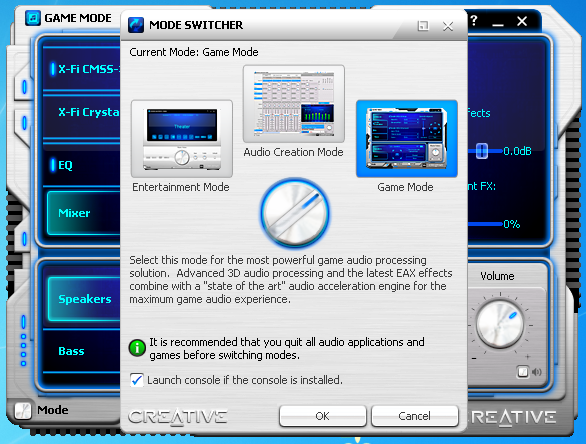 |
 |
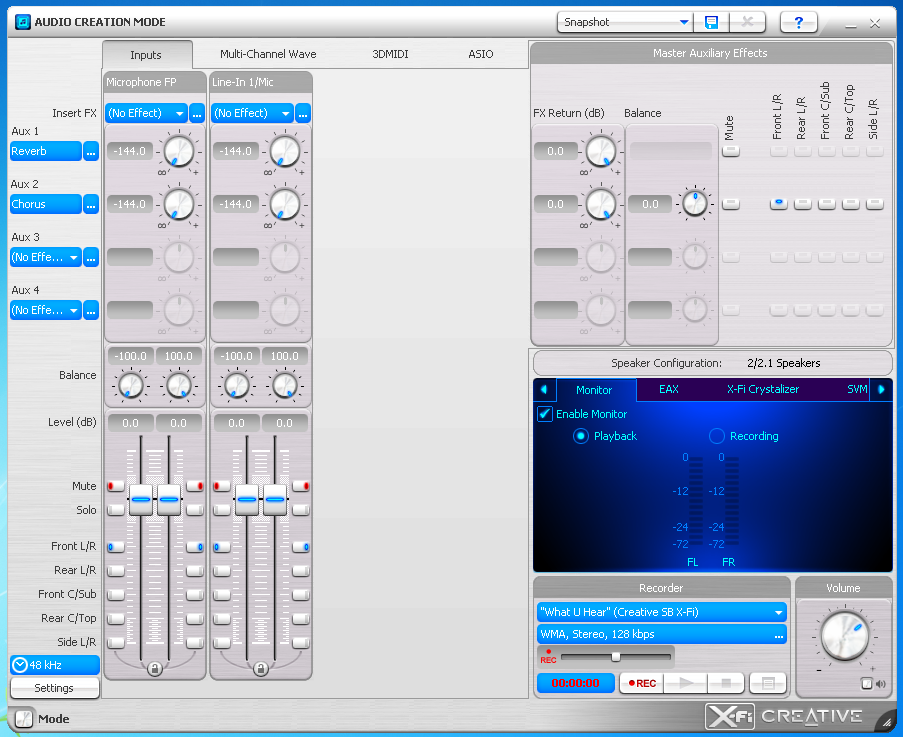 |
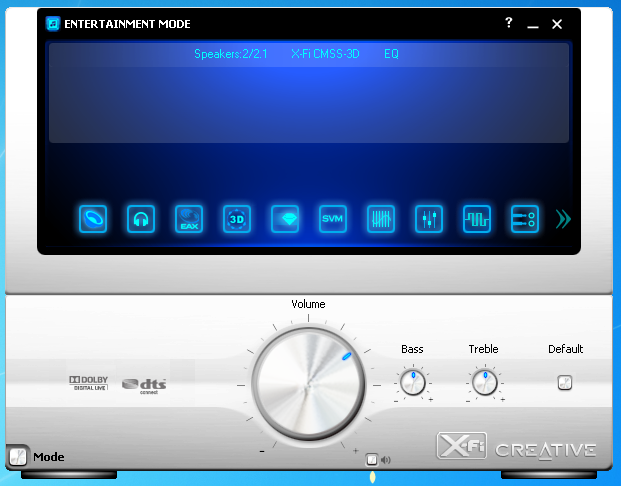 |
As the audio on the G1.Assassin2 is a full Creative Labs X-fi, you can pretty much guess that the audio is good. We did not run into any issues playing back any of the audio we threw at it and even gaming was excellent. The controls for the onboard X-fi are also great with three main modes available; Game Mode, Entertainment Mode, and Audio Creation.
Networking -
This one is something that is a requirement anymore. If you have a computer, the chances are good (like 99%) that you are also connected to high-speed internet. With this you need a good and solid LAN chip to make sure that your data flows properly out and back.
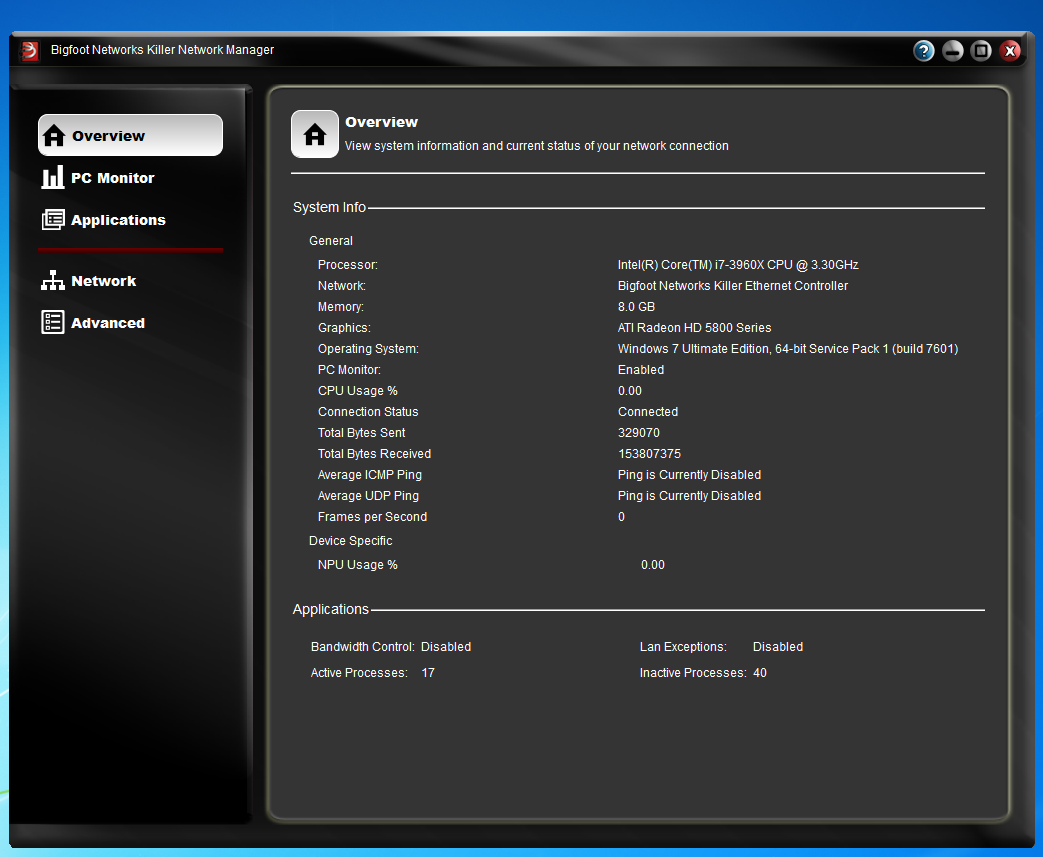 |
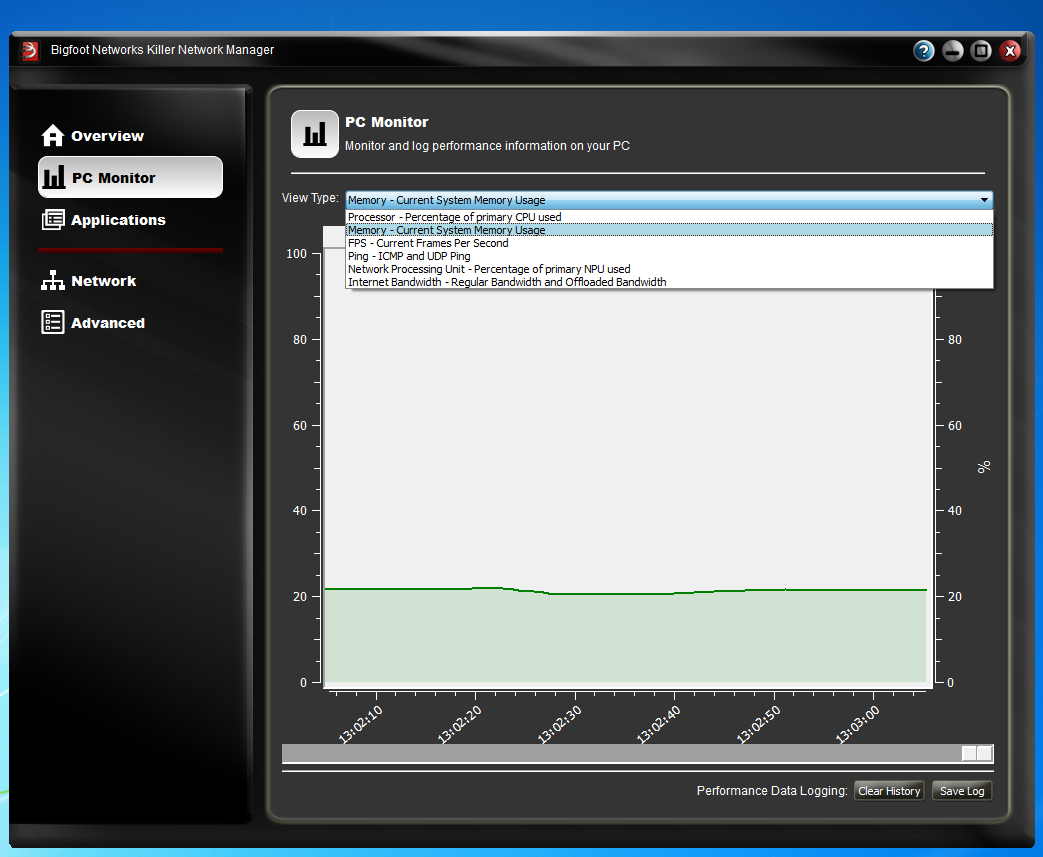 |
 |
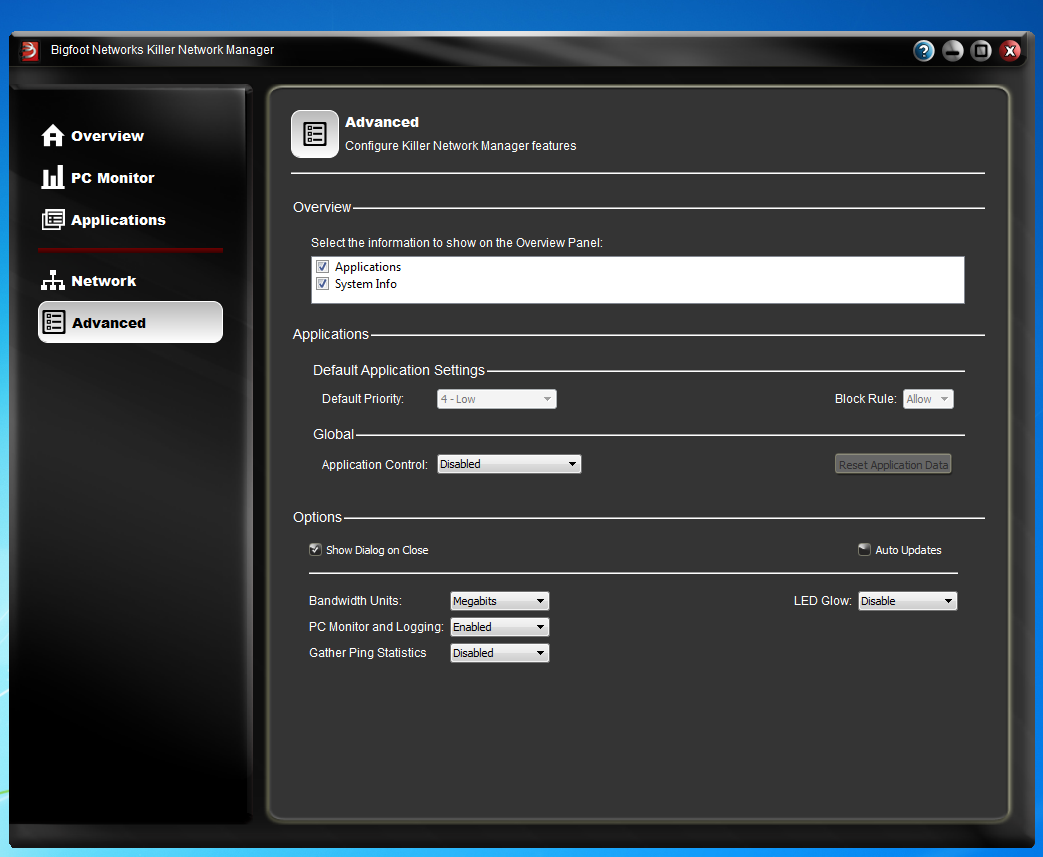 |
The networking is handled by a KillerNIC E2100 network processing unit. This (as we have said before) is not much more than a RISC (reduced instruction set) with a predefined QoS (Quality of Service) profile attached to it through an embedded OS. The drivers/utility that come with it offer you excellent control and monitoring over not only your networking, but also your whole system (for monitoring).

 We have now had the G1.Assassin2 up on the test bench for a little over a week now and are ready to talk about our experience with it. The G1.Assassin2 is Gigabyte’s current top of the line x79 motherboard and follows in the same trend as the other boards in the G1 line up. This means that you get the military theme, the built in audio card, and of course the KillerNIC E2100 NPU. However, there are also things that had us concerned about how the G1.Assassin2 might handle certain types of work. So let’s get started and see if all of the new features (like the 3D BIOS and 3D Power) work and if the concerns that we talked about in the
We have now had the G1.Assassin2 up on the test bench for a little over a week now and are ready to talk about our experience with it. The G1.Assassin2 is Gigabyte’s current top of the line x79 motherboard and follows in the same trend as the other boards in the G1 line up. This means that you get the military theme, the built in audio card, and of course the KillerNIC E2100 NPU. However, there are also things that had us concerned about how the G1.Assassin2 might handle certain types of work. So let’s get started and see if all of the new features (like the 3D BIOS and 3D Power) work and if the concerns that we talked about in the 

